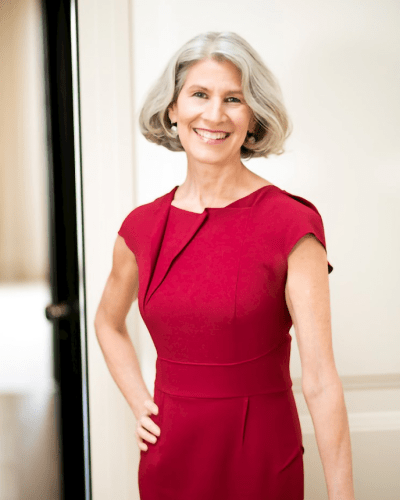“Art,” Gauguin said, “is either plagiarism or revolution.” Mary Ittelson favors revolution. She is my professor of the Arts Leadership course at Chicago Booth.
With a diverse background in the arts, business, and academia, Mary brings a unique perspective to her class at the intersection of artistic creativity and business entrepreneurship. She spent decades leading a consultancy that provided strategic planning and governance advice to arts organizations and taught a course on leadership in the arts and creative industries at Stanford Graduate School of Business.
Mary’s new class, Art + Business Lab, brings together students, artists, and business leaders to work towards positive change in the arts, business, and communities. With experience as a Chair of the Board and Associate Director at the Museum of Contemporary Art in Chicago, as well as a former consultant at McKinsey and current member of various arts and cultural advisory councils, Mary has a wealth of knowledge to share.
I sat down with her for an interview about her classes and more at Booth.

Rishav: To kick things off, what was the motivation behind starting an Arts course at Booth?
Mary: I believe this is one of the most exciting times in history to be at the helm of an arts organization; it is also one of the most nerve-wracking. On many dimensions, arts organizations are at the vanguard of grappling with the social, political, health, technological, and economic upheavals of recent years—on top of a tsunami of artistic and aesthetic ones. I was curious to see how Booth students would engage in this sector, which is not typically examined in MBA programs.
Rishav: How did “Arts Leadership: Exemplary is Not Enough” come about? The name is very interesting.
Mary: The name comes from the sobering fact that not-for-profit arts organizations with excellent business practices and excellent artistic offerings can still fail to thrive. The business model is precarious due to economic factors like cost disease as well as the unpredictable nature of art products and art audiences themselves. That’s why the class subtitle is “Best Practices and Radical Strategies,” and why the curriculum is a mix of business principles that are similar to those you find in other organizations and mission-driven approaches that are unique to the field.
Rishav: Tell us a bit about the course structure of Arts Leadership and how that has evolved over time.
Mary: The class is designed to place students in the shoes of arts leaders. The cases are situated in “bet the company” moments for each organization we study, forcing students to make strategic choices while stakes are at their highest. When the pandemic and related crises devastated the arts landscape, we wrote follow-up B cases forcing students to struggle in real-time with unprecedented leadership challenges, and to see how the choices they made in the A cases served or did not serve them during the crises and their aftermath.
Rishav: The class has guest speakers from some of the biggest arts organizations in the world. How do they gain from the interaction with Booth students?
Mary: I’m so glad you asked that question! It really is a two-way street with our guest speakers. The world-class artists, CEOs, artistic directors, and board chairs we are lucky enough to bring to class are always energized by the students. Maybe they came due to their interest in MBAs as a coveted market segment (and potential pool of donors!)—ut they leave with new perspectives from the astute student questions and observations.
Rishav: Can you share some of the most interesting and surprising things you’ve heard or read from students in the class?
Mary: One of the biggest surprises has been the insights from students with the least amount of prior artistic experience—they come at the material with fresh eyes and an eagerness to question conventional wisdom. Another happy surprise is that the vast majority of my students have a genuine commitment to the arts long-term, whether as avocation or vocation. Finally, each year I am moved by the students’ deep engagement in societal issues beyond business ones. This belies the stereotype of the greedy ruthless MBA personality, a misapprehension I want to quash right now.
Rishav: You’re creating a new class at Booth called Art + Business Lab. All the best with that! How is that lab going to complement the existing course?
Mary: The new class grew out of a desire to involve students in research and to explore areas we just don’t have time for in the Arts Leadership class. Over the years I have observed that some artists are the most talented entrepreneurs I know. On the other hand, I have observed that some entrepreneurs are the most creative people I know. And I have wondered what might be possible if those folks got together. This class is designed to experiment with just such possibilities. I am eager to work with Booth students this spring and see what we discover.

She holds an MBA from Stanford, a BA in Choreography from New York University, and has trained in dance at Juilliard. Mary’s past experiences also include working as a professional choreographer, running a modern dance company, and being an Assistant Professor in the Theater Department at Northwestern University.




